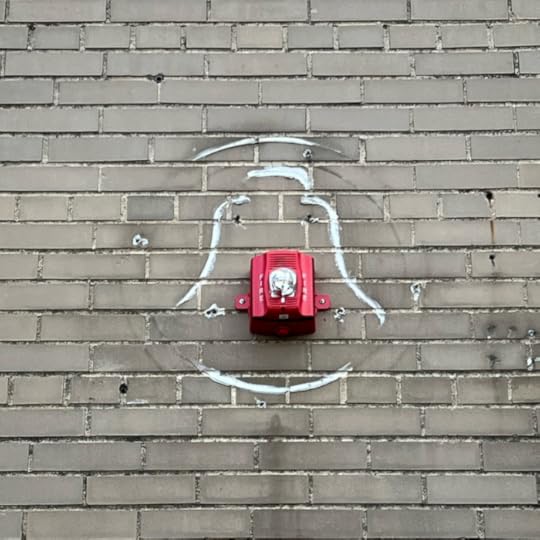Marc Weidenbaum's Blog, page 107
April 3, 2023
Junto Profile: Michel Banabila
This Junto Profile is part of a new series of short Q&As that provide some background on various individuals who participate regularly in the online Disquiet Junto music community.
What’s your name? Michel Banabila.
Where are you located? Rotterdam, Netherlands. Born in Amsterdam, then I grew up in Hilversum, Bijlmermeer, Buitenveldert, Amsterdam. There were always instruments at home. My mother, who is Dutch, played piano, my half sister played harp, my Jewish grandfather played violin and mandolin. The abrupt change when I was 9 — from living in nature (bird sounds, lots of trees, owls) to a flat apartment in an Amsterdam suburb under construction (ongoing sounds of pile driver hammers) after my mother and stepfather separated — made quite an impact. I was raised by my mother, as I did not know my biological Yemeni father, who left us when I was two. I met him once, for the first time in my life, when I was in my late 30s. Because of stories about him, I started to listen to all sorts of Arabic music. (However, I do not speak Arabic, so I just follow the music, not the lyrics — but I guess I do that actually most of the time with songs in English as well. I never pay much attention to lyrics.) I left home when I was 15 and started to live on my own in Amsterdam when the rest of the family moved up north. Listened a lot of different music at that time. Around the time I was 20 I discovered an 8-track studio in Amsterdam. I quit school and have no formal musical education. I pretty much tried to discover a lot by myself. I would say that listening (to music but also to sounds around me) was my education. Hearing Music for Films by Brian Eno was one of the things that gave me the direct motivation and inspiration to record. In that 8-track studio I made my very first recordings. They have been lost.
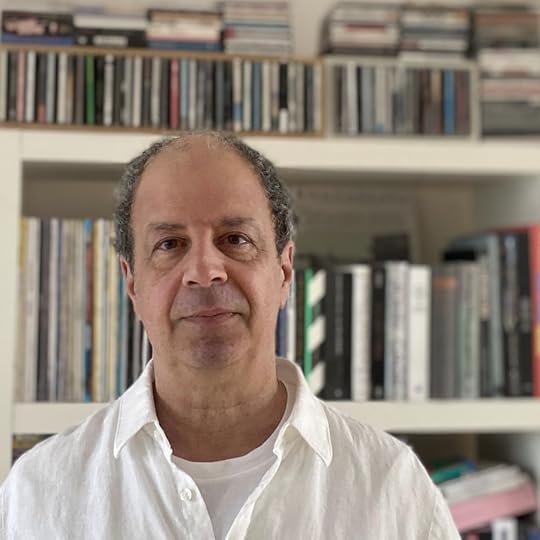
What is your musical activity? For years I recorded on a very regular basis at home with a computer. It was a huge liberation when the first Macintosh HD recording became available and I realized that with that I could record whenever and as long as I want. I record music for myself (these days available in self-released limited editions) and music for assignments (dance, theater, film). Some of my music has been published by labels like Steamin’ Soundworks, Bureau B, JJ Tracks, Séance Centre, Eilean Rec, and Knekelhuis. I record a lot outside, as well, using a field recorder, or simply my phone. I do not really seriously control any instrument but I play some keyboard and use my voice and any possible found objects. I performed live in bands, as well, and I still often love to collaborate with other artists. I feel I am not active in one particular genre, but more exploring different ideas, and the sort of music of course also depends on who I work with or the project I am involved in.
What is one good musical habit? Be open for anything that can happen. You can plan or compose whatever you want, but many things can and will happen that are not foreseen, whether it is a mistake, or something unexpected, whatever, and this can be to your great advantage. So you need space in your mind to tune in — not always easy, but necessary. Holger Czukay, a great composer, used to say a lot about this in his interviews. So although I can be very persistent and eager to get something in a way I want, whatever effort or time it will take me, I still have to admit that I feel the nicest and best things that happened to me musically so far actually took very little or no effort at all. When your brain is set into “playfulness,” great things can come in and then I actually never feel like I “did something,” but more like that I tuned into some stream from where everything happens naturally.
What are your online locations? I love Bandcamp. I have all my recordings there (artist account: banabila.bandcamp.com / listener account: bandcamp.com/banabila).
Instagram: instagram.com/michel_banabila
Soundcloud: soundcloud.com/michel-banabila
What was a particularly meaningful Junto project? Although I have been a Junto member since 2012, I did not record that much (compared with others) but still have about 54 recordings so far (banabila.bandcamp.com/album/disquiet-junto) and I am listening to all that right now. It is so nice to listen back, and it all feels quite playful and experimental. And each track is so different! Very hard to chose one particular one really, but:
– “Grey Bird With Guitar Commutes Through Ice and Fog To New York [Disquiet 0010 – Reflect]” was really nice to mix sounds from so many Junto members, including J.Butler, Ben Carey, mGee, R1ch, Open Heart Sound, Dance Robot Dance, Freaky DNA, Mike Bullock, Ted James, and Robinsoncobras.
– I enjoyed “KrakRot Noise Remix [Disquiet 0334 – Mass Branca]” a lot because it gave me the idea to remix an older song to get a huge wall of sound I made on electric guitar.
– The very collaborative “Disquiet 0431 Solitary Ensembles x 3]” was great fun.
– “[Disquiet 0500 – Humming to Your Selves]” was a bit scary to do but gave me a lot of ideas afterwards.
– For Disquiet 0207 I had the honor to have my first LP from 1983 being remixed by the Junto members (Remixing Marilli), which brought amazing results and it was great to hear all these different contributions.
– Last but not least, I still miss my dear cat Tapu, who unfortunately fell from our balcony and died — but I still have her lovely calming purr sounds in my very first Junto recording ever
Could you tell people what the music scene is like in Amsterdam? I don’t know that much of it, but I recorded several times with Gareth Davis (bass clarinet), who lives in Amsterdam (though he is mainly on the road performing abroad nowadays) and recently I recorded with a very old friend from Amsterdam, Olaf Keus (drums), who was also present on my very first live gig in Paradiso, in 1984. I love that beautiful old venue. You have a couple of interesting places / scenes, like Splendor, De Ruimte, and of course Bimhuis. A few weeks ago I went to a concert by Anton Goudsmit there, an Amsterdam based guitar player that I like a lot. He plays on some of my recordings. The Bimhuis is now in het Muziekgebouw, beautifully located at the water close to Central Station. I went to the Bimhuis in the ’80s already, when it was still situated at the Oudeschans in the centre, where me and my friends saw mind-blowing improvisations with people like Martin van Duijnhoven or Micha Mengelberg or Han Benninck. It made a huge impression on me. Those were the first times I saw concerts like that, and very exciting. There’s also OCCII, a great place where I performed at the Haperende Mens Festival in 2017. Musicians I follow now are like Oene van Geel and Albert Van Veenendaal, who I saw live with Bora Kim in Splendor. These days everything in the city gets more and more commercialized so musicians and venues in general are hugely dependent on subsidies. So far I’ve never been to De Ruimte, I really should go there. I can not always afford to go see concerts in Amsterdam. However, I do look forward to seeing two concerts soon, one by Die Wilde Jagd, and one by Kaitlyn Aurelia Smith.
April 2, 2023
A Proper Key
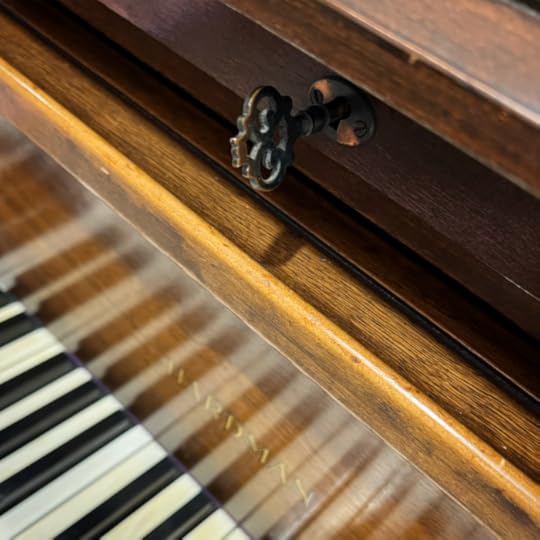
Shortly after posting a photo of a proposed interface for synthesizer design (real object, just not musical) that involved a keyhole, I randomly walked by an actual instrument (not an imaginary one) that has a proper key.
April 1, 2023
Scratch Pad: Vacation Void

Each Saturday morning, usually over coffee, I take a few minutes to gather together into one post most of the little comments I’ve made on social media the previous week. I sometimes edit for clarity, and I might flesh some out a bit. There’s a feedback cycle to this process. During the week, I find I am sometimes cautious about attributing a time frame to items because I know I’ll repurpose the material a few days hence.
In any case, I spent the week on Long Island on vacation with family (that’s a photo above of Long Island Sound from a short hike I took), and thus was offline a lot, thankfully. In fact, aside from recent photos also posted here, as well as a brief appreciation of the late composer Scott Johnson, I didn’t post anything on Mastodon (where I am at @disquiet@post.lurk.org) at all, apparently — and I didn’t even register so until this morning. I take this as a good thing.
I do a pretty good job of being offline on weekends. The healthy part isn’t so much the not-posting part or even the not-reading part so much as the not-awaiting-reply part (which is complemented by the then-not-replying-in-turn part). Those are three different categories, and the third of them has the greatest impact on my attention. I’d like to be offline even more solidly than I already am, and I already cease social media activity not only on the weekend but also after dinner during the week. (I do occasionally post a weekend photo to Instagram, another habit I’m trying to curtail.) Fortunately I sleep soundly, so I don’t regularly find myself up in the middle of the night, but if I did, the last thing I’d do is look at my phone. I have a Kindle, and I’d just read a little, or more than a little, as I waited for sleep to reclaim me.
That’s what’s on my mind as I emerge from the semi-bubble of this all too rare vacation break. Here are some notes that did surface during the past week:
Wordplay: A “sound” as a “narrow channel of water” (rather than, you know, sound in the sense of the aural) apparently is from Old Norse “sund” (“a strait, swimming”), or the Middle English equivalent (etymonline.com).Semi-public space: I have no idea what encourages a small business owner to transform the tone of their retail locations by situating a large television playing highly polemical material at a loud volume during working hours. I imagine this has just been a frog-boiling situation that originated with ordinary radio news, and then news got televised, and then all the more overtly opinionated, and rather than turn off the news in public, people just went with their chosen flavor of reality. (Also, a bright TV spewing nonsense has a very different presence than an unseen radio doing the same.) Me, I couldn’t get out of that bagel shop fast enough.
Hit parade: Whenever I come back to New York, I wonder if I’ll hear local (overplayed) heroes Billy Joel, Bruce Springsteen, or Bon Jovi in a public place first — or if I’ll hear some of their counterparts from the San Francisco Bay Area (Metallica, Journey). I heard none of them, not even once.
Drum hallucinations: On the flight home I listened to the great new Necks album, Travel , for the 10th time, or something close to it. A certain expression I was making with my face would loosen the seal of my earbuds, allowing the harsh white noise of the cabin to momentarily seep in. At first I thought this was the band’s drummer, Tony Buck, doing some sort of intense rumble. It was uncanny.
March 31, 2023
Resonating Bell
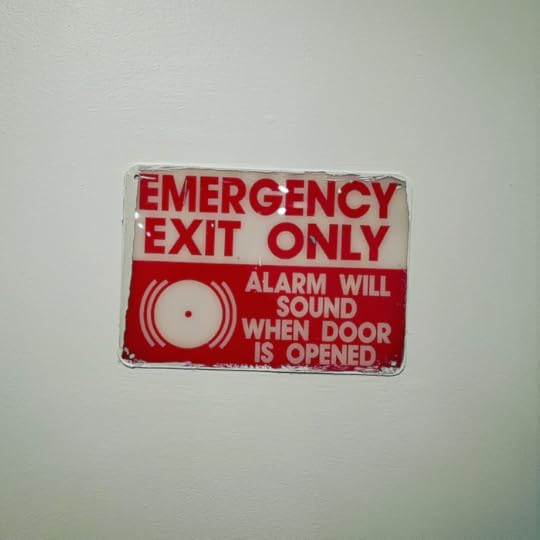
Above average “alarm will sound” sign. Love the resonating bell visual.
March 30, 2023
Disquiet Junto Project 0587: Sour Mash
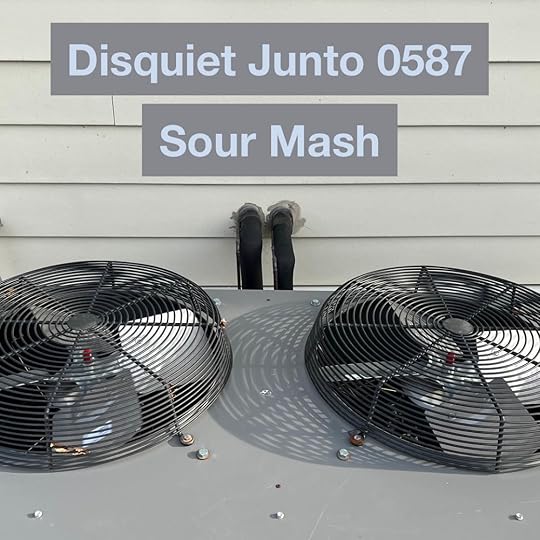
Each Thursday in the Disquiet Junto music community, a new compositional challenge is set before the group’s members, who then have just over four days to upload a track in response to the assignment. Membership in the Junto is open: just join and participate. (A SoundCloud account is helpful but not required.) There’s no pressure to do every project. It’s weekly so that you know it’s there, every Thursday through Monday, when you have the time and interest.
Deadline: This project’s deadline is the end of the day Monday, April 3, 2023, at 11:59pm (that is, just before midnight) wherever you are. It was posted on Thursday, March 30, 2023.
Tracks are added to the SoundCloud playlist for the duration of the project. Additional (non-SoundCloud) tracks appear in the lllllll.co discussion thread.
These following instructions went out to the group’s email list (at tinyletter.com/disquiet-junto).
Disquiet Junto Project 0587: Sour Mash
The Assignment: Let something go out of tune
Step 1: Record the sort of music you normally might, but let something go out of tune.
Step 2: Develop the piece from Step 1 further so that the out-of-tune-ness works in its favor.
Eight Important Steps When Your Track Is Done:
Step 1: Include “disquiet0587” (no spaces or quotation marks) in the name of your tracks.
Step 2: If your audio-hosting platform allows for tags, be sure to also include the project tag “disquiet0587” (no spaces or quotation marks). If you’re posting on SoundCloud in particular, this is essential to subsequent location of tracks for the creation of a project playlist.
Step 3: Upload your tracks. It is helpful but not essential that you use SoundCloud to host your tracks.
Step 4: Post your track in the following discussion thread at llllllll.co:
https://llllllll.co/t/disquiet-junto-project-0587-sour-mash/
Step 5: Annotate your track with a brief explanation of your approach and process.
Step 6: If posting on social media, please consider using the hashtag #DisquietJunto so fellow participants are more likely to locate your communication.
Step 7: Then listen to and comment on tracks uploaded by your fellow Disquiet Junto participants.
Step 8: Also join in the discussion on the Disquiet Junto Slack. Send your email address to marc@disquiet.com for Slack inclusion.
Note: Please post one track for this weekly Junto project. If you choose to post more than one, and do so on SoundCloud, please let me know which you’d like added to the playlist. Thanks.
Additional Details:
Length: The length is up to you.
Deadline: This project’s deadline is the end of the day Monday, April 3, 2023, at 11:59pm (that is, just before midnight) wherever you are. It was posted on Thursday, March 30, 2023.
Upload: When participating in this project, be sure to include a description of your process in planning, composing, and recording it. This description is an essential element of the communicative process inherent in the Disquiet Junto. Photos, video, and lists of equipment are always appreciated.
Download: It is always best to set your track as downloadable and allowing for attributed remixing (i.e., a Creative Commons license permitting non-commercial sharing with attribution, allowing for derivatives).
For context, when posting the track online, please be sure to include this following information:
More on this 587th weekly Disquiet Junto project, Sour Mash (The Assignment: Let something go out of tune), at: https://disquiet.com/0587/
About the Disquiet Junto: https://disquiet.com/junto/
Subscribe to project announcements: https://tinyletter.com/disquiet-junto/
Project discussion takes place on llllllll.co: https://llllllll.co/t/disquiet-junto-project-0587-sour-mash/
March 29, 2023
March 28, 2023
The Joy of Hex
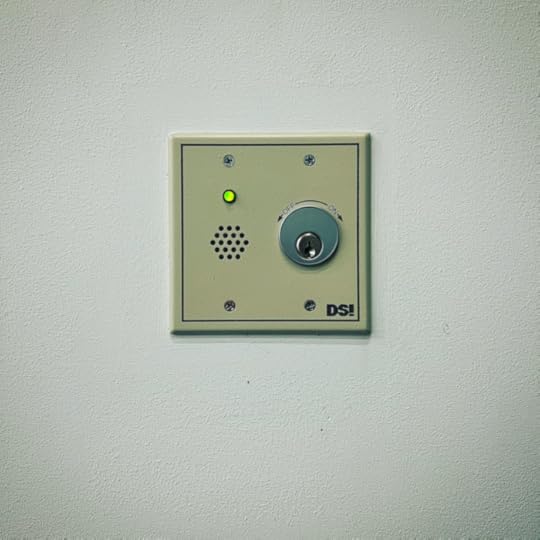
Interface design source material for synthesizer modules. Also: unidentified thing on a wall in a building. As Tom Whitwell responded: “Love a hexagon holes speaker grille.” Also have to love the careful, symmetrical positioning of those four screws.
March 27, 2023
Junto Profile: Joe McMahon, aka Equinox Deschanel
This Junto Profile is part of a new series of short Q&As that provide some background on various individuals who participate regularly in the online Disquiet Junto music community.
What’s your name? Joe McMahon, but since there are three of us by that name who are musicians, I use Equinox Deschanel for my musical endeavors. I’ve also performed with a number of groups in collaboration with Mike Metlay: as a part of Team Metlay back in the 1990s and at two of the Different Skies festivals while he was running those at Arcosant, Arizona, in the early 2000s. (I’m not counting the Chicago cover band in high school.)
Where are you located? I’m based in the San Francisco Bay Area right now, but I’m originally from a small town in the northern panhandle of West Virginia. I moved from there to the Washington, D.C., suburbs, where I worked for NASA for 25 years, and from there out to San Francisco, then Palo Alto, Redwood City, and finally San Jose.
My family was musical — we all sang, my mother played the piano, and my grandfather was a fiddle player. I taught myself piano and learned trumpet in school. My electronic musical life has mostly been an online one; before high-speed internet, I visited Pittsburgh and Tallahassee to collaborate with friends, and occasionally jammed with people in the D.C. area. In S.F., I’ve played in a performance of Cardew’s Treatise (sight reading it during the performance — not sure I’d recommend this!) and played in the 2010 Droneshift performance in San Francisco on drainpipe didgeridoo (I do not take myself seriously).
What is your musical activity? The best way I’ve been able to describe my music is as exploring the fractal edge of planning and coincidence; I like to set up a framework that has a vague direction, but let happenstance and “what happens if I turn this control all the way” take me to interesting places.
My influences are wildly varied: jazz, musique concrète, ambient music, generative music, “classical” electronic music, prog rock, Spike Jones, Laurie Anderson, Frank Zappa — anything that looks at things a little bit sideways. Or a lot. I like making things that make me happy to listen to, that you can sink into and enjoy, that make you smile, or make you laugh, or make you say, “oh, that was nice.”
I’ve been working seriously at recording and performing music since the mid-1990s, though I played other instruments, sang, and taught myself all my terrible piano habits before my teens. My middle school band teacher led me down the path to jazz and improvisation, and an elective class in college let me learn that I did indeed have a knack for synthesizers and editing (tape splicing FTW!).
I credit my fellow musicians at the 2010 Different Skies festival with encouraging me to actually start releasing my music instead of sitting on it and waiting for it to be exactly right, and the Earth Mantra netlabel for giving me wider exposure.
I’ve most recently been pressed for time, so I’ve been doing generative pieces, in particular learning how to turn Brian Eno’s Scape application into a serious performance instrument. I’m also learning how to use the iOS application AUM to build multi-instrument performances on the iPad, including embedded virtual modular from MiRack, and how to use Ableton Live effectively. I’m concentrating mostly on tools that let me use just one piece of equipment at a time, either the iPad or my laptop. And I’m still planning on getting my trumpet back out again.
Formative moments:
1962, 5 years old: Telstar , by the Tornadoes.Quincy Jones, Killer Joe on the radio at 10 or so. Timesteps and the main theme from A Clockwork Orange. That phasing bass!…the main theme was the first piece I ever worked out by ear. My parents got really tired of me fumbling my way through a dirge for hours at a time.90 minutes of playing with an ARP 2600 when I was 15. Stumbling across Stereo Electronic Music #1 , by Bülent Arel, about that same time.Improvising live with no score and no plan and a room full of people for a full half hour, and having it all work, at the Team Metlay recording sessions in 1992.1/1, Brian Eno, which I didn’t actually hear until 1995!What is one good musical habit? Learn to accept imperfection. The Junto has in particular reinforced this: there just isn’t time to agonize about every single nuance of performance and conception when you’ve only got a few days to do it in, embracing what comes and making it work. Do it, record it (or not!), release it. It takes many, many snowflakes to make a glacier. Giving yourself this luxury of acceptance is very freeing.
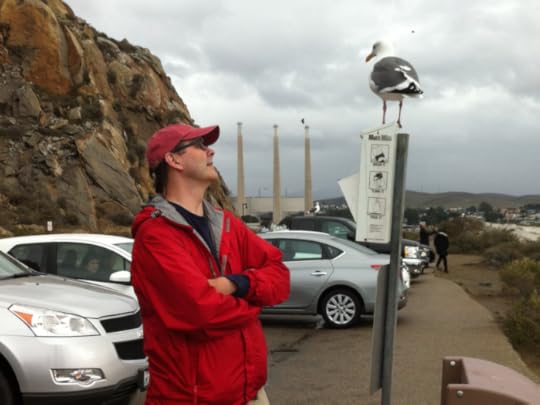 Turn It Loose: Joe McMahon, originally of West Virginia
Turn It Loose: Joe McMahon, originally of West VirginiaWhat are your online locations? Musically, you can find me doing my show on RadioSpiral (spiral.radio) on Monday evenings 6-8PM Pacific time, when I’ll be on the RadioSpiral Discord (radiospiral.chat) and in Second Life; during the rest of the week, I’ll be on the Disquiet Junto Slack, and various TTRPG Discords, particularly The Good Friends of Jackson Elias. I sometimes drop in on Lines (llllllll.co), but I’m not a frequent poster there.
My blog is at pemungkah.com — my old handle that I still use a lot of places because it’s one of my favorite gamelan pieces (which I did indeed do a cover of at one point).
I’m on Mastodon at @equinox_deschanel@sfba.social, though I’m still ramping up on that. I seldom use my Instagram, but will probably port that over to Equinox Deschanel at some later date.
My Bandcamp is at pemungkah.bandcamp.com/; it really should be at equinox-deschanel, but I hadn’t decided on using that until after I set up Bandcamp.
My Soundcloud, with all my Junto tracks, is at soundcloud.com/equinox-deschanel.
What was a particularly meaningful Junto project? There are several — the trio projects from 0429 to 0432 were particularly fun, and so inspiring that I did several tracks in each of those! I was particularly fond of Off Angle, from Junto 0431.
I was incredibly happy with how well the vibe track came out; I felt almost like I was playing live with the rest of the trio.
The solo track that I think was the most successful was from Junto 0456, Line Up: ”Interpret a painting by Agnes Martin as if it were a graphic score.” I think this is my very best interpretation of a Junto prompt. I got to use a virtual ARP 2600 and Buchla Music Easel (two of my very favorite synthesizers) on the track, and I’m exceptionally proud of the performance I got out of Ableton Live and some very restrained control tweaking.
What would you say to someone who has trouble understanding how jazz, which can be perceived as improvisatory, can relate to electronic music, which can be perceived as structured?
I think it’s really a false dichotomy – at some timescale, there’s always a choice being made about what the next note is; traditional jazz just turns the dial way up (as I so love to do) to “we have a framework that we’ve agreed upon, but most of the time we’re not going to plan what any of us is going to play until we perform the piece”.
There’s still a lot of structure: this is the “head” – the melody we’ll play as a starting point – and these are the chord changes we’ll use, and these are the cues we’ll use to decide who’s soloing and for how long. It’s just that it’s a different structure.
A tracker piece, for instance, turns the intuition dial way down: every note has to be precisely specified as this note, this long, on this instrument. But that decision of “what note is next?” has to be made before the next set of parameters can be typed: heavy planning, very little coincidence – but there still needs to be an instinctual decision as to what the next thing is, even if it’s going to be set in stone. Or electrons.
But many genres of electronic music absolutely do improvisation, as much as jazz does; they just do it with fewer simultaneous instinctive choices happening. Berlin-school pieces often have a synth solo or guitar solo happening over a repeating background, much like a jazz solo over a set of chord changes. Many, many modular artists set up a framework via an initial patch and then explore where they can go from there.
For me, this maps right into the same headspace as jazz; it’s just that the kind of improvisation is different. Tweaking knobs, switching cables, and fading things up and down are still instinctual choices in the moment, taking that leap of faith that you know your instrument and have goals in mind, and that you will find them by exploring.
Many of the pieces I’ve done for the Junto have, at their heart, been deeply influenced by jazz, but not necessarily in terms of harmony; but instead in terms of making those instinctual choices during the performance in pursuit of the final piece.
Sometimes they’ve been improvisations on an extremely stretched time-scale, where I take a set of “notes”, like a series of industrial fan samples, foghorns, or tweaks to a patch, and improvise how and when I play them over a longer period of time. Sometimes they’re “I can hear what would work with this; let me get my hands on the keyboard and find it.” Sometimes it’s “I’ve got these loops, and I know how they sound; I’ll wait and listen and hit the button when it’s time for this one.”
It’s all still jazz, you just have to squint to see it!
RIP, Scott Johnson (1952-2023)
RIP to composer and guitarist Scott Johnson. It’s hard for me to overstate how obsessed I was with his music during college and in the early 1990s, especially of course John Somebody (1982), his debut recording, which introduced his signature mode, in which music carefully tracked the nuances of human speech. And then there’s his inventive original score for Paul Schrader’s 1988 film, Patty Hearst. He was part of Laurie Anderson’s Strange Angels and David Van Tieghem’s Strange Cargo, two albums from 1989 that, like his own music, sounded strange at the time and turned out to be the foundation of a future normal: glitchy, fractured, conceptual, and innately mediated by technology. Kronos Quartet recorded at least two of his pieces (on Short Stories and Howl, U.S.A.). The central text of John Somebody — “You know who’s in New York? You remember that guy, John somebody? He was a … he was sort of a …” — is as cemented in my head as are the homeless man’s song in Gavin Bryars’ Jesus’ Blood Never Failed Me Yet (1971) and the preaching in Steve Reich’s It’s Gonna Rain (1965).
Steve Smith has a well-informed obituary in today’s New York Times, from which I borrowed the above transcription of the spoken material in John Somebody.
March 26, 2023
On Repeat: Serge, Guðnadóttir
Brief mentions each Sunday of my favorite listening from the week prior:
▰ Mark Lentczner, aka Electric Kitchen, performs this deep drone piece for the 50th anniversary of the Serge synthesizer instrument line developed by Serge Tcherepnin. Lentczner is one of numerous participants on a recent series of albums collecting Serge-centric works.
▰ The great film-score composer Hildur Guðnadóttir took part in the “What’s in My Bag?” video series from Amoeba Records. In it she talks animatedly about Gavin Bryars, Mortan Feldman, Ellen Fullman, Alvin Lucier, Pauline Oliveros, and other favorites. She’s currently working on Joker: Folie à Deux, the sequel to the move that won her an Oscar. (Thanks, Paul Ashby, for pointing this video out.)

